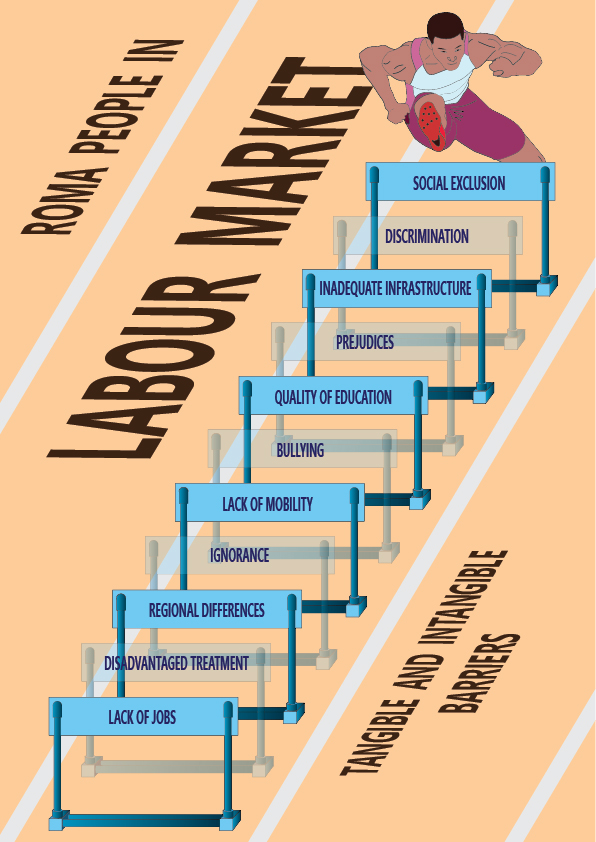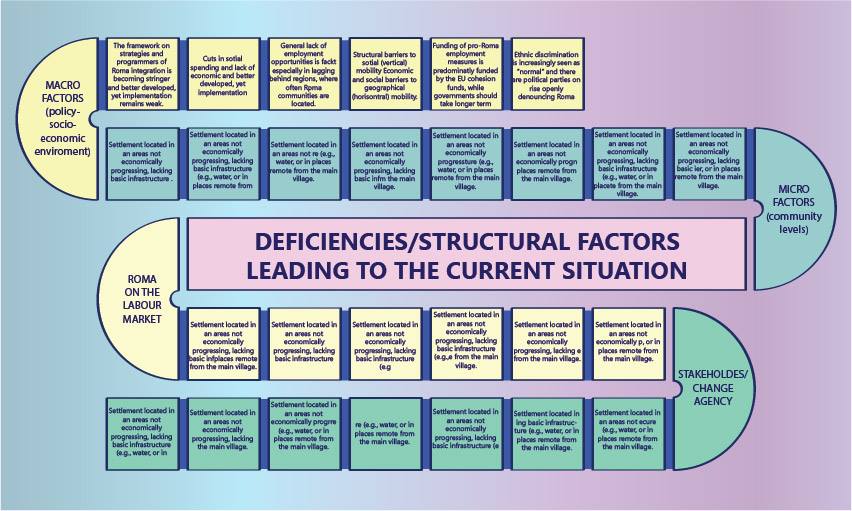RARE - ROMA ETHNIC MINORITY AND THE LABOUR MARKET
12-02-2018
MAPPING DEFICIENCIES AND CHALLENGING BARRIERS
“Roma do not, and will not work” is perhaps the most wide-spread stereotype expressed in personal interviews among people from different regions and different walks of life. What the very same people often do not realise is, that there is wide spread discrimination on the labour market and prejudices in place. There is sometimes missing elementary bus connection to even get from the segregated settlement to a nearby city. Nevertheless, despite diverse difficulties many Roma are finding job opportunities and benefit from efforts of various stakeholders challenging the barriers and opening the space for integration.
There are many types of barriers on the labour market – i.e. overall economic and social development, lack of jobs, regional differences, education demands on jobs available, but regarding the Roma population, even more difficult for challenging and addressing are such factors as disadvantaged treatment of Roma people at institutions and offices, ignorance or in worst cases bullying, and last but not least ‘soft’ discriminatory practise among employers and co-workers often leading to expulsion.

Mapping the deficiencies and addressing the barriers has been one of the key approaches when designing and launching activities of the Interreg Danube Transnational Programme 2014 – 2020: Changing Discourses, Changing Practices: The Roma as Human Resource (RARE). The Deficiency Map, developed as part of the work, focuses on key challenges institutions and public services face in boosting Roma people's labour market activation and on mapping procedural and institutional deficiencies. As we illustrate on the Figure 1, the concrete situation of concrete people depends on many structural barriers and factors. Any job seeker from a disadvantaged environment is coming into more or less close encounters and relations with various institutions and public services. Yet in social reality we see that many well-intentioned approaches fail because of lack of attitudes or even hostility among the key stakeholders on the local level.
The key stakeholders in this perspective are EU institutions, the state and labour market governance, municipalities, political parties, market/debt collectors, employers, international/national donors, non-state actors/non-governmental organisations and local associations. For each of the stakeholders we describe their role in supporting/preventing inclusion of Roma into the labour market (Key Challenges), while in the second part we outline what should be done or changed for a better performance and results (Fields for interventions).

Challenges and Fields for interventions
What is key challenge is successful implementation of human rights, social rights, labour and education policies in practical politics. In 2011, the European Commission adopted a Communication pushing for the development of national strategies for Roma integration detailing the concrete policies and measures to be taken. Yet in reality we see only limited progress in coordinated social, economic and environmental policies aimed at job creation and social inclusion. Problem is, that this positive pressures are in the same time halted by growing automatization and advanced IT technologies, resulting in decreased demand especially for lower skills labour.
Regional survey points out to the key role of municipalities. If the leadership of a town or village is pro-active, we may see rather progressive approaches. Yet it applies also other way round and there are documented cased where biased and/or passive attitude to development initiatives practically blocked local initiatives and prevents progress. Pro-Roma approaches are generally not popular among the majority population and prejudices/stereotypes prevail over through traditional media and new social media. Even mainstream parties are riding on the populist approaches of “iron hand” expressed in calls for penalising and disciplining the poor, and Roma in particular. It is only through examples and best practice sharing where we may anticipate a change.
There are many other potential fields for interventions. The beginning should be in addressing the prejudices/stereotypes aimed at the Roma ethnic minority. These are widespread and naturally presented in schools, labour offices, municipalities to all other related spheres.
Addressing specifically employers, mediators between business and employees is a priority. Especially bigger employers, willing to open their jobs to Roma should support mediators from the side of non-state actors who would work with the Roma communities and individually and help to address barriers Roma face in practical life with taking a job.
What next?
Key role in addressing problem of the Roma unemployment have institutions and public services. Here we focus especially on the state, the municipality and the non-state actors.
Diversity is a core value of the European Union. Municipalities, companies and organisations that recognise and value diversity as a development or business strategy by putting people first, regardless of their gender, race, age, religion, sexual preferences or physical disability, have a longer-term advantage. The discrimination of the vulnerable groups and specifically Roma, contribute to the deepening inequality and marginalization and multiply the problems instead of solving them.
